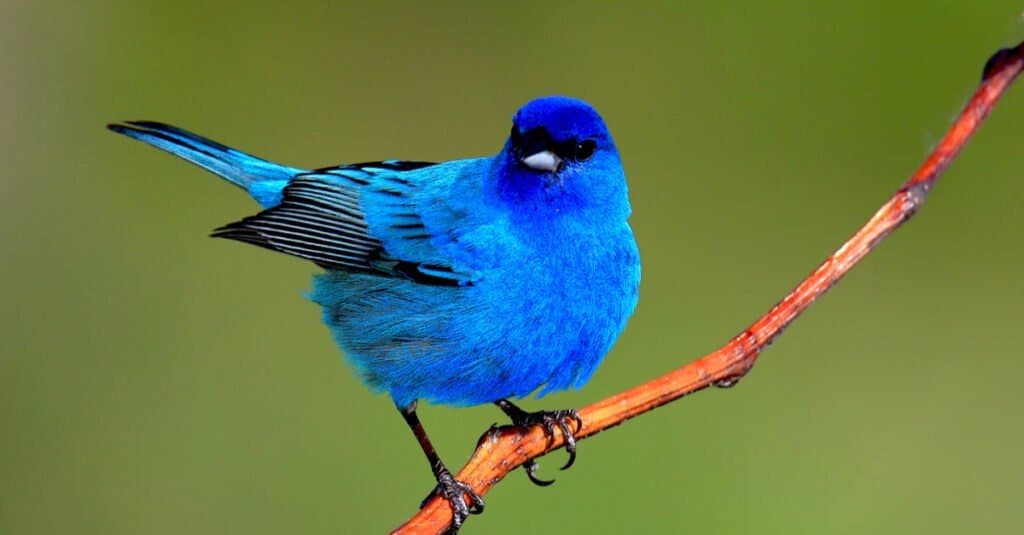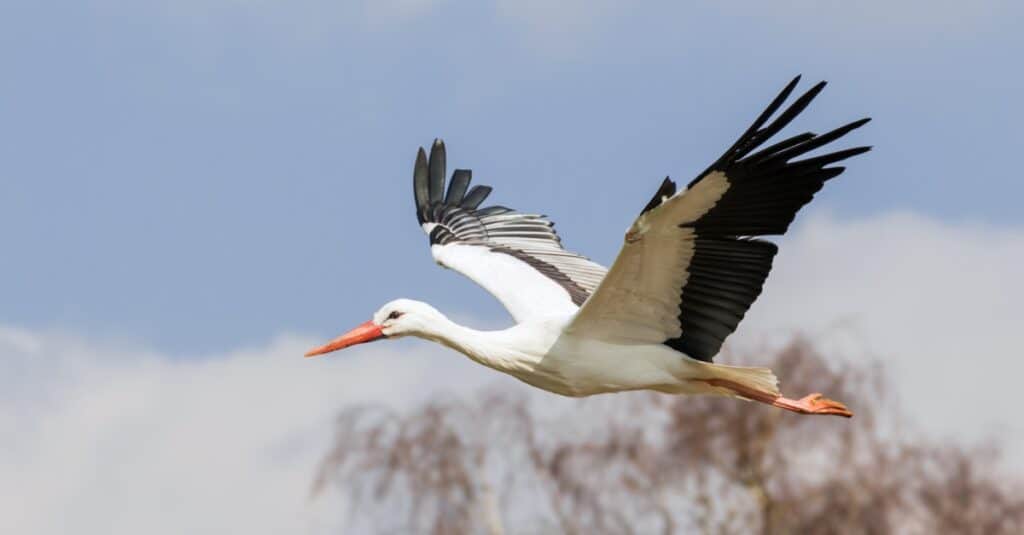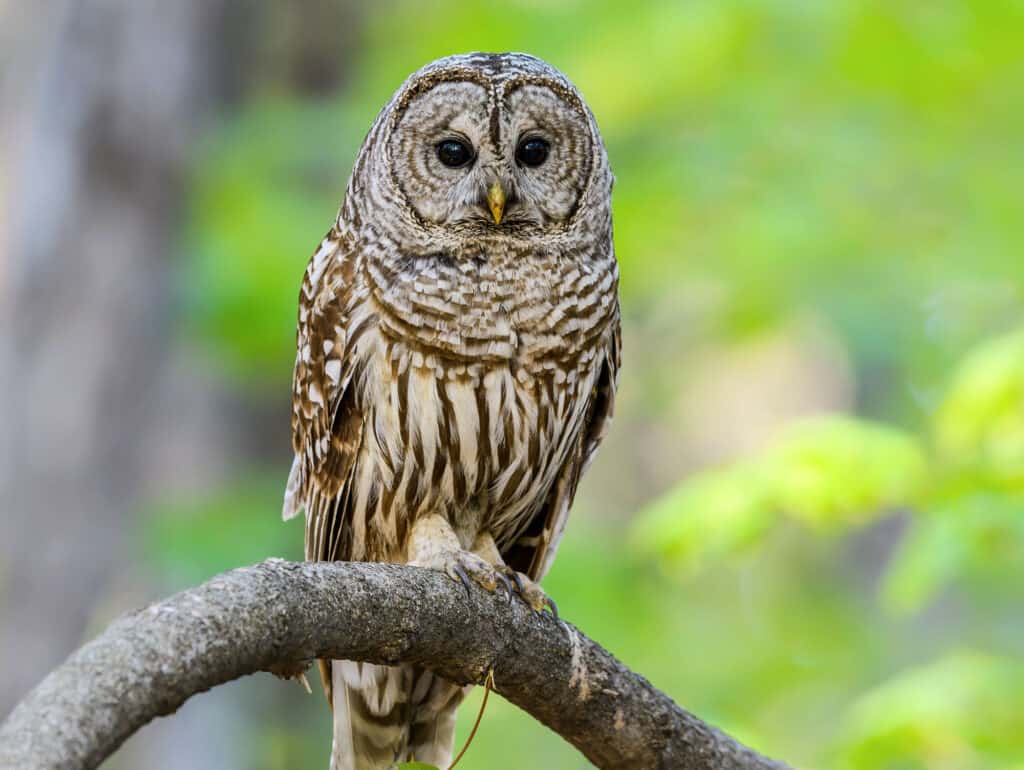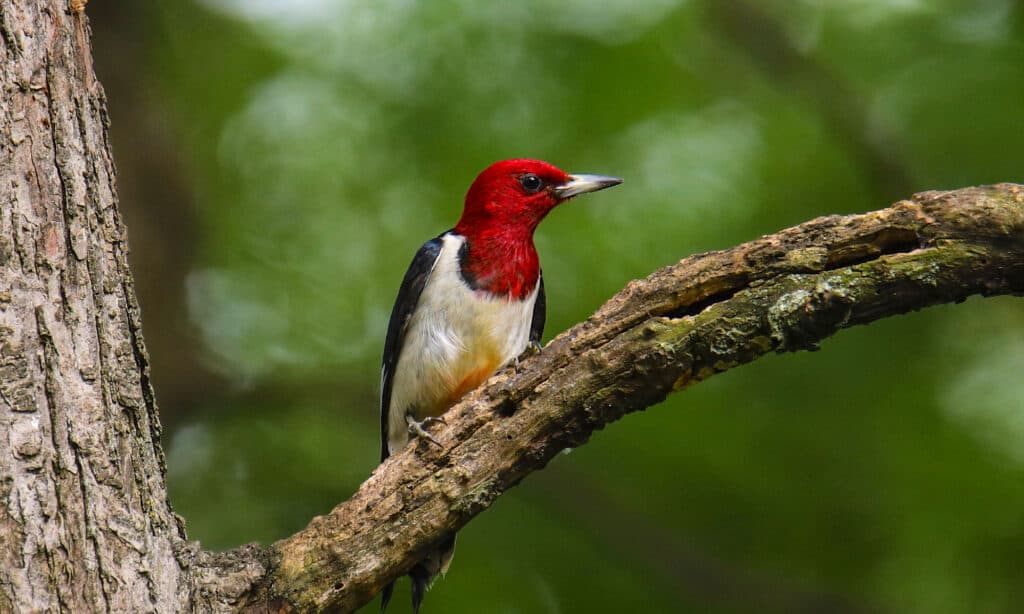The state of Iowa is located right between 2 major river systems: the Mississippi River on the eastern border and the Missouri River on the western border. That’s good news for any avid bird watcher searching Iowa’s best bird watching spots. The Mississippi Flyway, which is associated with the Mississippi River, is a major migration route for various waterfowl, shorebirds, hawks, and passerines. Similarly, the Missouri Flyway is the major migration route for Snow and Ross’s geese and several waterfowl.
In addition to hosting an abundance of eastern and western bird species on their yearly migration trips, there are several other nesting birds that call this state home. There are at least 390 documented species of birds in the state’s natural and man-made ecosystems that consist of natural wetlands, prairies, mountains, and forests. For bird watchers looking to catch a glimpse of any of these native and migratory bird species, this post details some of the top spots in the state where you can watch them.
Lacey Keosauqua State Park
The Lacey Keosauqua State Park is a top camping destination and also a great place to go for walks, fishing, swimming, and best of all, bird watching. The 1,653 acres park has been in operation for more than a century, making it one of the oldest in the state. The park was officially designated as an Iowa Bird Conservation Area in 2015.
Since there are cabins and campgrounds in the park, it’s perfect for anyone that wants to stay for a few days. The wooded valleys in the park and the area around the Des Moines River host a wide array of nesting birds. You can explore these areas using one of the dozen hiking trails available throughout the park. The Lacey Keosauqua State Park is open every day from 4:00 AM to 10:30 PM.

Indigo Buntings are
migratory birds
that can use the stars to navigate and travel at night.
©John L. Absher/Shutterstock.com
Common bird species at the Lacey Keosauqua State Park:
- Summer Tanager
- Yellow-Billed Cuckoo
- Wild Turkey
- Red-Headed Woodpecker
- Cerulean Warbler
- Pileated Woodpecker
- Carolina Wren
- Scarlet Tanager
- Baltimore Oriole
- Warbling Vireo
- Indigo Bunting
- Northern Parula
Saylorville Reservoir
The 6,000-acre Saylorville Lake and the surrounding 20,000 acres of land provide plenty of opportunities to see various birds and other wildlife in their natural habitat. The area is recognized as one of the most globally significant birding sites in the world. In addition, there are numerous campgrounds, picnic areas, boat ramps, and hiking trails you can use to explore the reservoir and the area around it.
In addition to being one of Iowa’s best bird watching spots, the Saylorville reservoir is close to other impressive bird watching areas such as Red Feather Prairie. This is a particularly great place to catch a glimpse of grassland birds. The reservoir and nearby parks (within a 10-mile radius) have at least 300 species of birds on record. Jester Park, one of the most popular bird watching spots in the area, has up to 250 species of birds. The Sandpiper Recreation Area is another popular area where you can find several unexpected bird species.

Wood Storks are huge birds with a 6-foot wingspan.
©Ian Duffield/Shutterstock.com
Common bird species at Saylorville Reservoir:
- American Pipit
- Snow Bunting
- Grebes
- Nuthatches
- Thrushes
- Black-tailed Gull
- Wood Stork
- Black Vulture
- Mottled Duck
- Roseate Spoonbill
- Gyrfalcon
Waubonsie State Park
Perhaps the most popular thing about this state park is its abundance of hiking trails. However, avid birders will find this area a productive location to explore for birding activities. It is, in fact, one of the best bird-watching locations in Southwestern Iowa. The area has several hills, upland, and plains which are all hotspots for birding activities.
With close to 2,000 acres of recreational land to explore, you can be sure to see an abundance of bird species in the tranquil area surrounding the park. The Riverton Wildlife Management Area is also located just five miles east of this state park. This wetland habitat hosts several waterfowl and shorebirds.

Barred Owls have loud and impressive vocalizations.
©FotoRequest/Shutterstock.com
Common birds at the Waubonsie State Park:
- Summer Tanager
- White-Breasted Nuthatch
- Barred Owl
- Wild Turkey
- Wood Thrush
- Blue-Gray Gnatcatcher
- Eastern Whippoorwill
- Eastern Towhee
- Yellow-Billed Cuckoo
- Louisiana Water Thrush
- Scarlet Tanager
- Ovenbird
DeSoto National Wildlife Refuge
The DeSoto National Wildlife Refuge sits on the border of Nebraska and Iowa and lies partly in both states. The 8300-acre refuge is located on the DeSoto Lake, an oxbow lake formed by the Missouri River. The surrounding land includes a wide range of habitats, including grasslands, river sandbars, and forests. It provides an excellent location to find different species of birds.
There are 12 miles of access roads through which you can explore the refuge. There’s also a visitor’s center, where you get a great view of the lake as well as other impressive attractions. The park is open every day, including holidays. However, the visitors center is closed on some days.

Red-Headed Woodpeckers are omnivores, although 2/3 of their diet is made up of plants.
©vagabond54/Shutterstock.com
Common Birds at the DeSoto National Wildlife Refuge:
- Wild Turkey
- Baltimore Oriole
- Grasshopper Sparrow
- Wood Duck
- Red-Headed Woodpecker
- American White Pelican
- Dickcissel
- Snow Goose
- Lark Sparrow
- Orchard Oriole
- Bald Eagle
- Double-Crested Cormorant
Yellow River State Forest
Located in the Northeastern end of Iowa, the Yellow River State Forest offers free bird-watching sites open to the public in its protected areas. This park is one of Iowa’s best bird watching spots, with various habitats hosting different bird species. The area’s striking bluffs and hardwood forests located along the Mississippi River provide plenty of opportunities to catch a glimpse of various species of birds.
Thanks to the diverse habitat it offers, this park is one of the best spots to find migratory songbirds in Iowa. The park is open to the public every day, including on public holidays. The park is close to the Effigy Mounds National Monument Park, another great location where bird watchers can explore different bird species.

Adult red-shouldered
hawks
have a very rich, red coloration on their “shoulders” and chest.
©MTKhaled mahmud/Shutterstock.com
Common birds at Yellow River State Forest:
- Ruffed Grouse
- Wild Turkey
- Red-shouldered Hawk
- Barred Owl
- Red-headed Woodpecker
- Yellow-bellied Sapsucker
- Pileated Woodpecker
- Acadian Flycatcher
- Yellow-throated Vireo
- Wood Thrush
- Ovenbird
- Louisiana Waterthrush
- Prothonotary Warbler
Up Next:
- Florida’s 5 Best Bird Watching Spots this Summer
- California’s 4 Best Bird Watching Spots
- Wisconsin’s 10 Best Bird-Watching Spots This Summer
The photo featured at the top of this post is © Danita Delimont/Shutterstock.com
Sources
- Audubon, Available here: https://www.audubon.org/news/birding-iowa
- Bird Informer, Available here: https://www.birdinformer.com/birding-iowa/
- Fat Birder, Available here: https://fatbirder.com/world-birding/north-america/united-states-of-america/state-of-iowa/
Thank you for reading! Have some feedback for us? Contact the AZ Animals editorial team.







